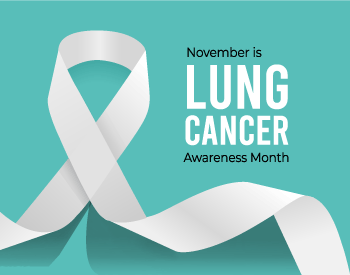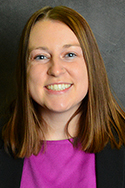A Breath of Knowledge: Lung Scans Can Save Your Life!
by Amanda Hansmann
October 2023
Cancer is the leading cause of death for Minnesotans with approximately 300 new cancer diagnoses in Swift County alone occurring every five years, according to the Countryside Community Health Assessment. Because of this, every day primary care physicians talk with their patients regarding cancer prevention and the screening tests that can pick cancer up early and backed by slogans such as "Get Behind a Cure" for colon cancer screening, "Mammography Saves Lives" for breast cancer, and "Take 3, Fight HPV" for the vaccination shots that can prevent the cancer-causing human papillomavirus. Because lung cancer has the highest death rate, why not add it to the screening list?
There are many causes of lung cancer, and while smoking probably comes to mind first, nonsmokers can get lung cancer from things like asbestos and radon. Asbestos is a building material in insulation and roofing that resists heat. Radon is a radioactive gas that leaks out of soil, rocks, and water into homes – particularly basements. Once there, it silently wreaks havoc. Here in Minnesota, it's even more common and can cause more problems because the gas is trapped when homes are closed up due to long winters. Radon home tests are available, and the state's Department of Health webpage has information on kits and local agencies that can help.
Despite the fact that asbestos and radon can cause lung cancer, smokers are still at the highest risk for getting lung cancer. That risk now qualifies current and past smokers for lung cancer screening.
Getting lung cancer screening is like school picture day. However, instead of a picture of the face, it's a picture of the lungs done by a machine called a CT scanner, or CAT scan. The visit is brief, no needles, no pain. This CT picture can show lung cancer when it's only a very small spot in the lungs, less than a quarter to a half inch in size. Because screening can pick up lung cancer when it's so small, sometimes removing it can be a cure. But most important is that finding it early can mean a longer life with treatment. Waiting until lung symptoms happen can be too late: Cough, chest pain, and shortness of breath are often blamed on a common cold that won't go away instead of lung cancer.
A volunteer group of national experts has set up these screening guidelines for smoker's only: Anyone age 50 to 80 who has smoked one pack of cigarettes per day for a total of 20 years at any time during their life should consider getting this screening test.
And get it every year.
It also may come as a surprise that even if someone has not smoked in 15 years, screening is still important for lung cancer detection. In contrast, if someone stopped smoking 16 years ago? Screening is not recommended. Noted is that non-smokers don't qualify for screening.
 It can't be ignored that
like other cancer screenings, lung cancer screening costs
money. However, Medicare covers the test and many other
insurances do also as detailed by the American Lung
Association's online insurance checklist.
It can't be ignored that
like other cancer screenings, lung cancer screening costs
money. However, Medicare covers the test and many other
insurances do also as detailed by the American Lung
Association's online insurance checklist.
Primary care providers have an important role in the detection of cancer, even before a cancer doctor is a part of the team. They are often the first in point of care access for patients, the first to have a screening discussion with their patients, and first to order their patients' CT lung scans.
Gearing up for the long winter, remember that November is Lung Cancer Awareness month and a perfect time to get the inside work of lung cancer screening done. Whether a smoker or a used-to-be smoker, ask a local healthcare provider in Swift County or elsewhere if you can get that "I've Been Screened for Lung Cancer" box checked!
This article also appeared in the October 18, 2023 issue of the Swift County Monitor.
About the Author
 Amanda Hansmann is a third-year medical student
at the University of North Dakota School of Medicine &
Health Sciences. She was selected as the Benson
participant for the school's ROME program, or Rural
Opportunities in Medical Education. The program focuses
on teaching student doctors the importance of rural
newspapers as a way to share health information. As a
future rural healthcare leader, Hansmann has written this
column to provide health information for her ROME
community. The information is not for diagnosis or
treatment and should not be used in place of previous
medical advice provided by a licensed provider.
Amanda Hansmann is a third-year medical student
at the University of North Dakota School of Medicine &
Health Sciences. She was selected as the Benson
participant for the school's ROME program, or Rural
Opportunities in Medical Education. The program focuses
on teaching student doctors the importance of rural
newspapers as a way to share health information. As a
future rural healthcare leader, Hansmann has written this
column to provide health information for her ROME
community. The information is not for diagnosis or
treatment and should not be used in place of previous
medical advice provided by a licensed provider.
